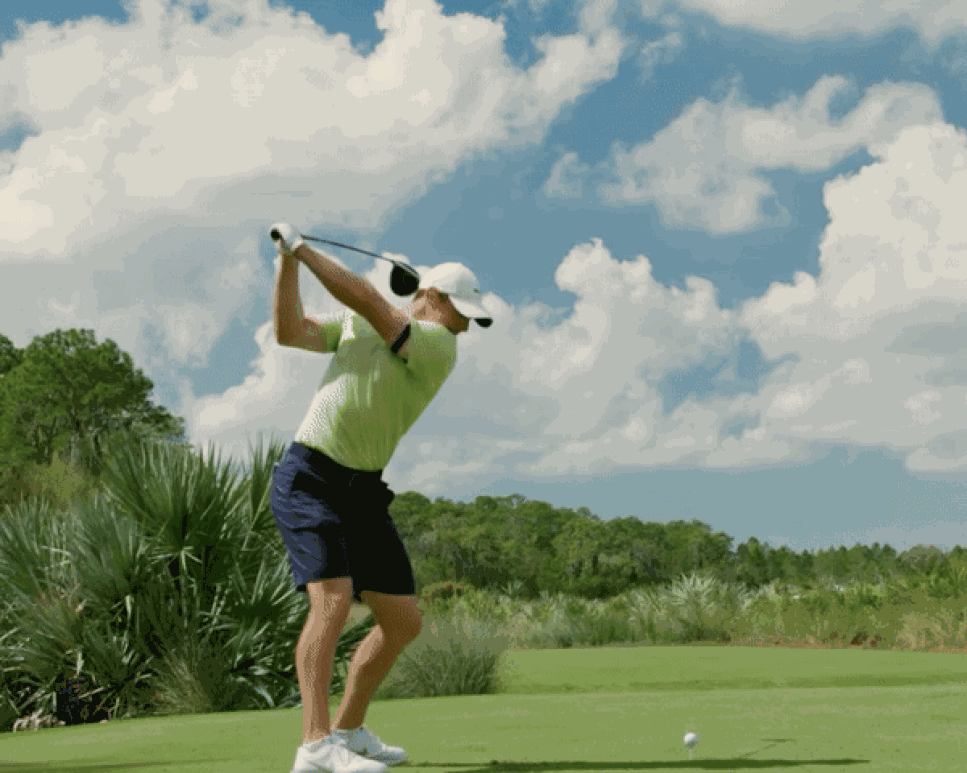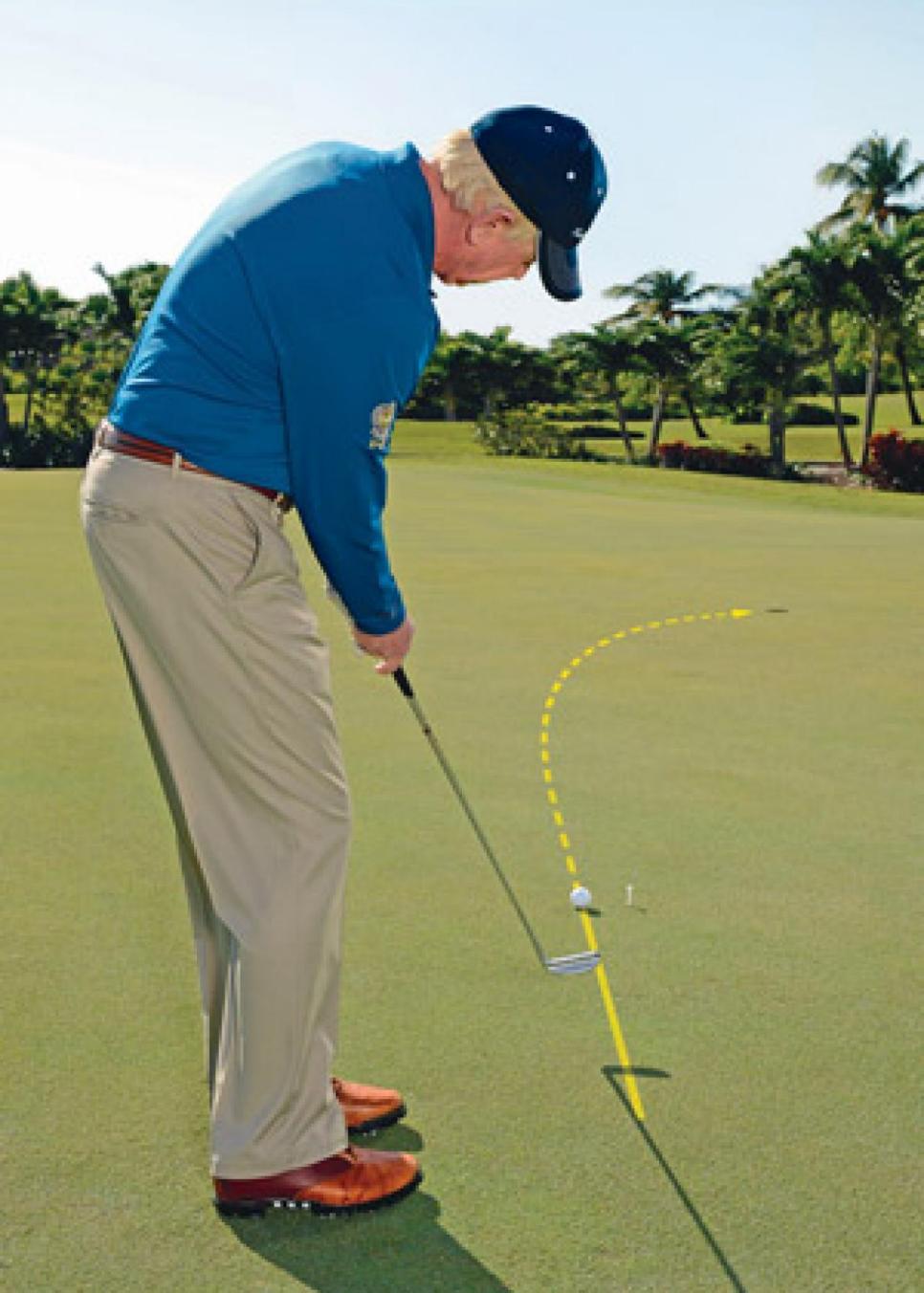This article first appeared in Low Net, a Golf Digest+ exclusive newsletter written for the average golfer, by an average golfer. Have a topic you want me to explore? Send me an email at [email protected].
I am a sucker for a good swing thought. There are hundreds I’ve utilized over the years, many of them conceived and abandoned in the time it takes to complete my backswing.
I always figured a swing thought’s efficacy was like anything else in golf, somewhat random, a bit personal. It’d be like asking why I remember certain song lyrics and not others. Don’t some just have a way of sticking?
It turns out, that’s the point. Like song lyrics, some swing thoughts do stick with you better. But it’s not as random as I assumed.
Dr. Will Wu is a Professor of Motor Control and Learning at Cal State University-Long Beach who has studied the way athletes ingrain different movements. From his research of golfers, he says an external focus of attention is far more effective than an internal focus.
“The data is overwhelming in terms of the benefits,” Wu said.
OK, great, it’s settled.
But wait, what does that mean?
Let’s use a few of my recent swing thoughts to help clarify. I’ve written recently about my efforts to shallow my downswing. One key move in that sequence is to keep my right elbow in front of my right wrist on the way down, the way Rory does below. An internal swing thought would be just that — “lead with the right elbow.” At full speed, though, it’s not so simple, because an internal focus on specific body parts makes those parts more rigid.

“In a sense, it freezes them, right, or pinches them,” Wu said. “It doesn’t allow your joints to move freely or in a coordinated manner.”
By contrast, an external swing thought channels my energy more toward an outcome. I’ve become a fan of this odd fellow, who says a golf swing should be similar to the motion of skimming stones.
At no point does he mention elbows or wrists, but for me, it still clicks. Even if not as literal, I subconsciously know to position certain pieces a certain way to achieve a specific result.
“From a pure pragmatic functional standpoint, an external focus of attention encapsulates way more movement information,” Wu said.
Once you begin to understand the difference between an external and internal swing thought, it becomes easier to arrive at a more effective focus for different parts of your game. When Gary Player stresses accelerating through chips, he doesn’t discuss “quick hands through impact,” but rather, striking the ground as if “lighting a match.” Golfers who want to stand taller at the top of their swings shouldn’t think “arms high,” but rather “reach for the sky.”One of my favorite putting tips from Butch Harmon is to “putt with your left ear,” which is his way of saying I should keep my head still long enough to hear the ball drop in the hole.
As Wu said, what registers with me might be different than what clicks for you. But it’s always better to try to tap into athletic instincts rather than attempt to follow a series of mechanical steps. Very often less is more. If it was simply a matter of volume, I’d already be on tour.
Questions from Low Netters
Thanks to everyone for the feedback and questions. Have a question or idea for a future topic? Send me an email and I’ll do my best to dive in.
I have a big problem with making putts that break left to right. I consistently don’t play enough break and miss to the low side. Is there a cure? — Bill
Bill, join the club. The left-to-right ones give me fits because I usually don’t complete the stroke and thus leave the face open. The best tip I’ve received on this is from Jim McLean about picking an intermediate target and focusing on putting to it as if it was just a straight putt. The only alternative would be to just make sure we always leave ourselves a putt from the other side, but that might be asking too much.

Thoughts on Jordan Spieth getting DQed for a wrong scorecard a few weeks ago?— JC
JC, I realize the establishment answer about golf rules is that the player is responsible and everyone governs themselves and yada yada yada, but I think in this case it’s dumb. I strongly believe a player trying to pull one over on the field should be penalized. But a clerical error on something that was conducted in full view of everyone is not cause for disqualification. It’s a rule that exists only to see if you can screw it up —the pro tour equivalent of not being allowed to change your shoes in a private club parking lot. And if you’re adamant about that one, well, I worry that we can’t be friends.
Speaking of pesky rules episodes
Thursday at the Players featured a somewhat contentious exchange between Rory McIlroy, Viktor Hovland, and Jordan Spieth over where McIlroy should drop after flying a tee shot in a hazard. But on the awkward meter, it didn’t come close to two years ago at the Players and a similar debate between Daniel Berger, Joel Dahmen, and, again, Hovland. I love this video breakdown from Christopher Powers, but I’m also grateful that golf the way the rest of us play doesn’t get hung up on such technicalities. I could ask my playing partner Joe where he thinks I should drop, but that would require Joe paying attention to anything I do.
This article was originally published on golfdigest.com



